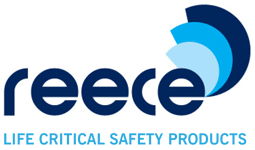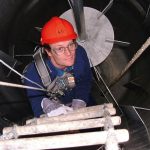The Confined Space Regulations is an Approved Code of Practice (ACOP) first introduced in 1997 to provide guidance not only for people whose work involves entering confined spaces but also for their employers, those managing the activities, and those tasked with training them to work safely in these environments.
Working within confined spaces can pose some significant risks, typically but not exclusively involving industries like construction, manufacturing, chemical processing and the utilities.
Foreseeable Specified Risks, as outlined by the Confined Space Regulations 1997, refer to specific hazards that have the potential to constitute a serious danger to life and health. These hazards often occur within confined spaces where the nature of the space causes or exacerbates the risk.

The presence of Foreseeable Specified Risks then decrees that a challenging working environment legally becomes a ‘confined space’. Once this has been established, there is a range of legal obligations set out by the Regulations that must be adhered to at all times.
This is a complex area, and one where experience, training and awareness of the expectations of the Health and Safety Executive must play an important role in ensuring the risks are correctly identified, managed and documented.
What are specified risks?
Foreseeable ‘Specified Risks’ are clearly outlined in the Confined Space Regulations 1997, and relate to risks arising from and enhanced by work in enclosed or partially enclosed spaces. They include:-
- Fire and explosion caused by the accumulation of flammable substances, leading to injury
- High temperatures in confined spaces leading to an increase in body temperature and loss of consciousness
- Asphyxiation, where loss of consciousness is caused by lack of oxygen, gases, fumes or vapours
- Drowning caused by the sudden inundation of the working area
- Asphyxiation caused by free-flowing solids, such as sand, leading to entrapment and reduced access to oxygen.
Where one or more risks are identified during an assessment, the Confined Space Regulations 1997 must be complied with at all times.
Understanding the risks is vital; people are still dying or being seriously injured because of a lack or recognition and assessment for specified risks. This applies not only to those working in confined spaces but also to rescue attempts carried out without relevant training and suitable equipment. The Regulations require that emergency escape and rescue plans must be in place before any work commences.
How do you identify foreseeable risks?
Foreseeable specified risks need to be assessed and identified by people with the correct skills, knowledge and training. Risk assessments are a vital starting point in acknowledging risk and controlling situations and environments. Engaging all those involved in the planning and execution of the work will enhance the correct identification of risks.
Assessing foreseeable specified risks assumes three defined levels of knowledge, covering common knowledge, industry knowledge and expert knowledge. In the workplace, common knowledge and industry knowledge are generally the required levels to identify and manage risks.
- Common knowledge refers to a general understanding of products and risk, and applying common sense precautions in given situations
- Industry knowledge means that when risk extends to the workplace, it is vital to have formal practices like COSHH risk assessments and approved safe systems of work in place. Assumptions based on common knowledge will not suffice; key identified risks must be examined and appropriate controls put in place to ensure safety at all times
- Expert knowledge goes beyond common knowledge and industry knowledge, involving consulting experts to advise in specific areas such as air sampling and product interactions.
Other long term risks include potential damage to health caused by exposure to noise, hand-arm vibration (HAV) and substances such as asbestos. Existing health and safety guidelines now mitigate many of these risks.
Lock Out Tag Out systems also play an important role in controlling foreseeable specified risks. Isolating equipment using LOTO processes removes identified risks associated with the accidental powering up of equipment during maintenance and repair procedures.
Foreseeable specified risks, such as engulfment by solids and drowning, can be removed where equipment such as hoppers and conveyors are completely de-energised and locked off.
Why is documenting specified risks important?
- It is mandatory and a vital consideration when identifying and assessing specified risks. Regulations like the Confined Space Regulations 1997 require employers to assess and control specified risks in confined spaces; other HSE regulations are also in force and must be considered by employers at all times.
- Employers have a legal duty to protect their employees and others from harm, including identifying and managing hazards, according to the Health and Safety Executive. Identifying and mitigating against Foreseeable Specified Risks plays an important part in this.
- Identifying and controlling specified risks is crucial for ensuring the safety of workers in these potentially hazardous environments.
Ultimately, the existence of FSRs means proactive safety measures are a legal obligation to mitigate these risks. At Reece Safety, we have been providing a comprehensive suite of professional, fully accredited City & Guilds training courses for over three decades, delivering everything from low-risk entry to high-risk entry and rescue training.
How are specified risks managed?
- Carrying out risk assessments - Employers are legally obliged to carry out detailed risk assessments of all risks presented by working in a confined space, including the potential for specified risks as detailed in the Confined Space Regulations 1997.
- Implementing effective control measures - Employers must then implement appropriate control measures to minimise or eliminate these risks, such as providing adequate ventilation, ensuring proper safety equipment is used and rescue plans are in place, and implementing work procedures that prevent exposure to hazards such as LOTO.
- Ensuring access to appropriate training and supervision - Workers must be adequately trained on the hazards and control measures present in each specific confined space environment or application.
Conclusion
Identifying foreseeable specified risks and mitigating against these is a vital consideration when implementing safe working procedures and ensuring the health and safety of people working in confined spaces. Employers must also be aware of the heightened obligations arising from the presence of these risks where controls and mitigations cannot completely rule them out.
Professional training courses can help here in ensuring that all employees recognise and acknowledge the importance of identifying these risks and maintaining safe working procedures at all times.
 UK
UK US
US










